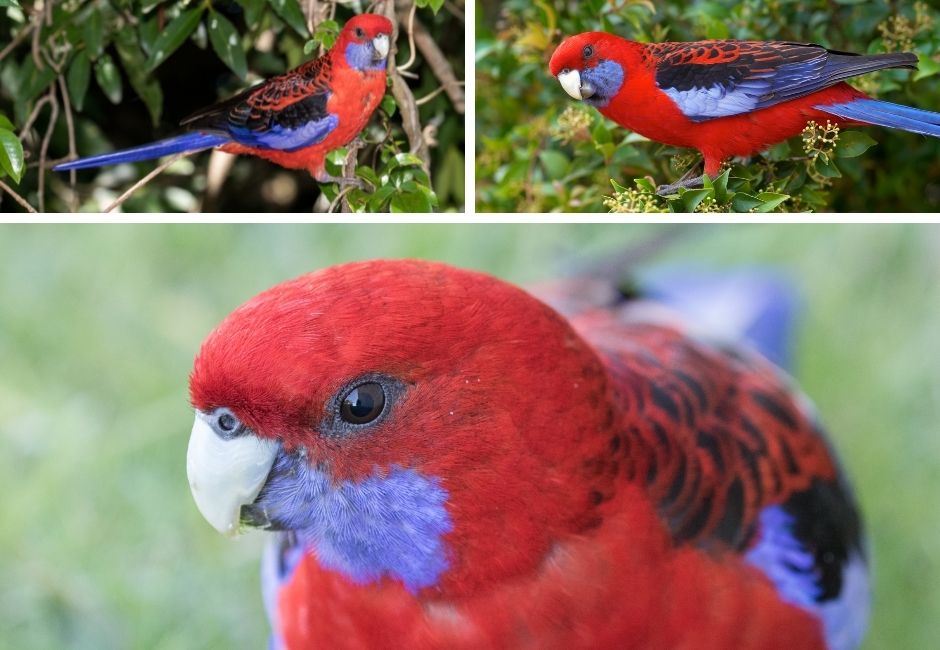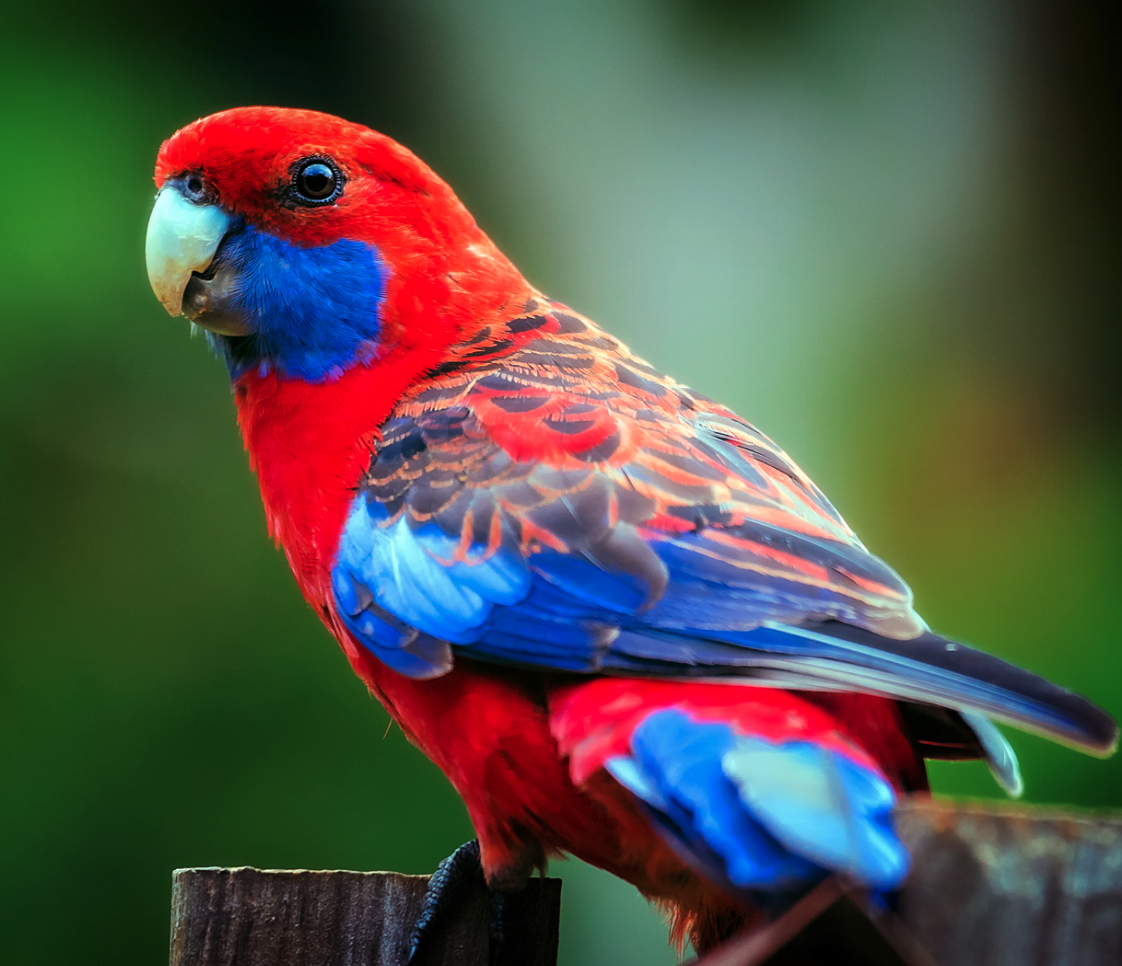The crimson rosella, or crimson parakeet, (Platycercus elegans) was first described by John Gould in 1838 from specimens collected at Cooktown in Queensland, Australia (although he incorrectly identified them as yellow-fronted). The species has since been introduced to New Zealand and Norfolk Island, where they have established feral populations.
The crimson rosella is a parrot with crimson, blue, and black plumage. The bird is easily distinguished by its V-shaped tail. Adult birds can measure about 30cm in length and weigh approximately 170g. The lifespan of a crimson rosella is typically 10 to 15 years. They have an average clutch size of 3 eggs that hatch after 24 days. Females incubate the eggs while males provide food for the female during this time. Once the chicks hatch, both parents will feed them for about three months until they are independent enough to fly.
The crimson rosella is a parrot native to eastern and south-eastern Australia. The rosella is commonly found in Blue Mountain forests. However, they are not restricted to these areas and can also be found in gardens. The crimson rosella is a beautiful bird that is sure to enchant anyone who sees it.
The crimson rosella is omnivorous. Its diet consists of nectar, pollen, fruit and invertebrates. They often forage for food on lawns and golf courses as well as in forests. Because it is a generalist feeder, its diet does not consist only of one type of food.
There are actually three different types of crimson rosella: the Western, the Eastern, and the Northern. The Western crimson rosella is the most common, and can be found in both Perth and Adelaide. The Eastern crimson rosella is a bit less common, and is found mainly in Sydney. Finally, the Northern crimson rosella is the least common of the three, and is found in Queensland.
What conservation issues are there with this species?
Although the crimson rosella is not currently considered endangered, there are some conservation issues to be aware of. For example, habitat loss due to deforestation is a threat to the rosella’s natural habitat. Additionally, the introduction of non-native species to areas where the crimson rosella lives can disrupt the delicate balance of the ecosystem and lead to competition for food and resources.
![]()


